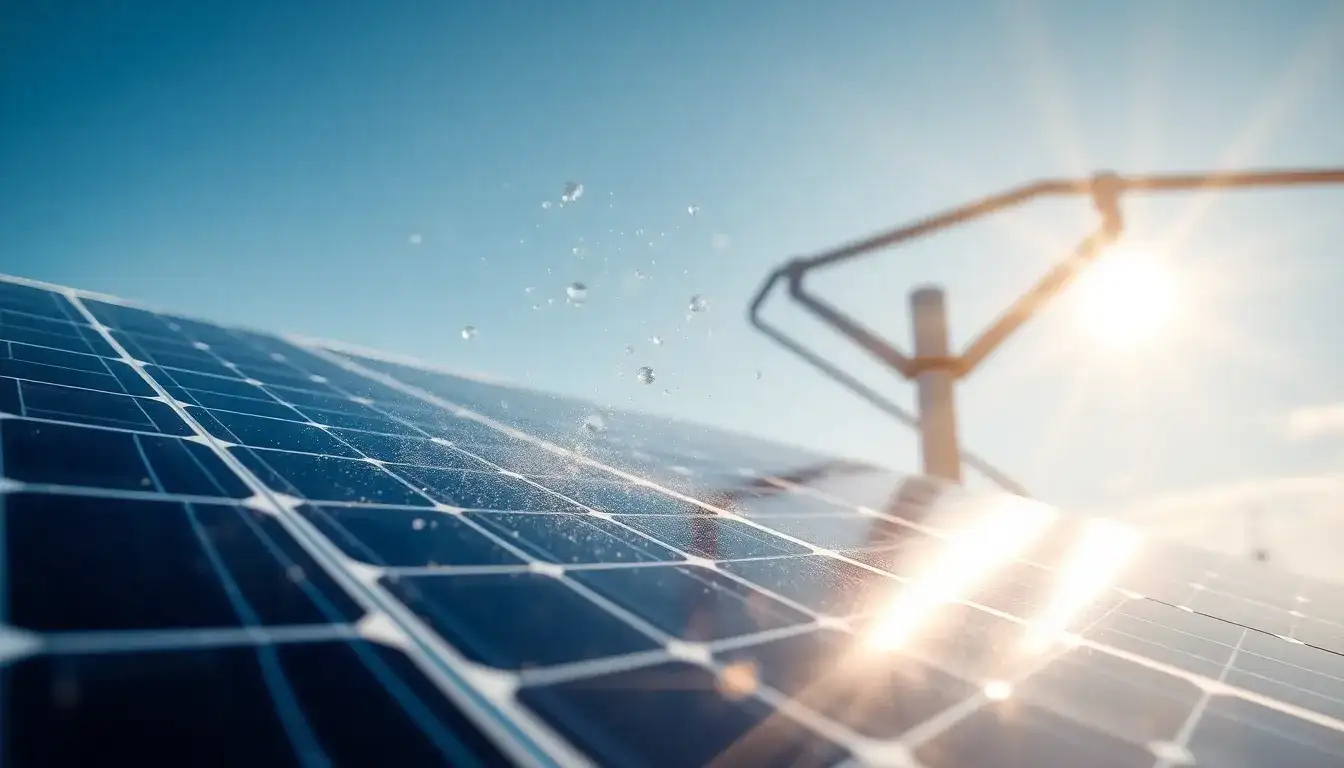
Dust Prevention Technology Enhances Power Generation Efficiency of Photovoltaic Modules
On March 24, 2025, Longi Green Energy introduced the Hi-MO X10 dust prevention module, which boasts a maximum power output of 670 watts and a conversion efficiency of 24.8%. This innovative module incorporates Longi’s pioneering dust prevention technology, resulting in a theoretical energy generation per unit area that exceeds conventional TOPCon modules by more than 10%.
It is important to note that due to the nature of commercial and industrial photovoltaic systems, dust accumulation is a significant issue. Dust not only reduces the transmittance of photovoltaic glass, limiting the amount of solar radiation reaching the cell surface, but it can also cause “hot spot effects,” corrode the glass cover, and even wear down the module surface, severely impacting the efficiency and lifespan of photovoltaic components.
The Hi-MO X10 dust prevention module from Longi Green Energy redefines the value and safety standards of distributed photovoltaic systems with its “fire prevention, blockage prevention, and dust prevention” features. Guo Jinwei, head of the product solutions department for Longi’s distributed business in China, explained, “Our approach to dust prevention was selected after extensive research. We physically mitigate the impact of the frame height difference on the glass surface and reduce obstacles to dust removal.” He added, “During operations, some clients mentioned that they previously cleaned their modules quarterly. After using the dust prevention modules, they may reduce cleaning frequency by one instance. Additionally, even during fixed maintenance intervals, the dust prevention modules continue to enhance their dust prevention effectiveness. This significantly reduces the likelihood of hot spots.”
For example, on a 10,000 square meter rooftop, the Hi-MO X10 dust prevention module can generate an additional 189,000 kilowatt-hours of electricity annually compared to TOPCon modules, resulting in an increased revenue of 113,000 yuan. Over a 30-year lifecycle, this can lead to an additional revenue of approximately 2.67 million yuan. With the same rooftop area, the second-generation BC modules allow for a 6% increase in installations compared to TOPCon units, leading to more energy production and higher returns, effectively transforming one rooftop into the equivalent of 1.2 rooftops.
In fact, in October 2023, Longi launched the BC Dust Prevention 1.0 module. After two years of real-world applications, it has achieved an average generation of over 2% per watt. The current second-generation BC modules employ HPBC 2.0 technology using Tai Rui silicon wafers, featuring functions such as blockage prevention, strong performance in low light conditions, low temperature coefficients, and enhanced light absorption, with unit area generation exceeding the first-generation BC modules by 8%.
Liu Zhi, general manager of Shandong Fengrui Power Technology Co., stated that a photovoltaic power station installed in Shandong last May averaged 4.5 hours of generation per day, totaling over 1,642 hours annually—10% more than expected—resulting in over 700,000 yuan in additional revenue in just one year, allowing for a return on investment within two years.
Longi’s president of the distributed business in China, Niu Yanyan, explained that while outsiders may perceive the dust prevention modules merely as optimized designs of the module frames, the true “core” lies in Longi’s robust research and development capabilities and innovative spirit. To develop the dust prevention modules, Longi has overcome dozens of technical challenges and accumulated over 120 patents.
Longi has also received the industry’s first platinum-level certification for the GB/T 32230—2015 “Enterprise Quality Culture Construction Guidelines” from SGS, a globally recognized testing, inspection, and certification authority. Chen Huijun, general manager of SGS Shanghai and head of the management and assurance group for East China, stated in an interview, “As the photovoltaic industry continues to grow, the focus of market competition has shifted from ‘capacity battles’ to ‘quality contests.’ Longi’s achievement in obtaining the platinum-level certification will inject new vitality and strong momentum for the transformation and upgrading of the photovoltaic industry. By implementing this standardized management system, Longi not only enhances its global competitiveness but also helps the Chinese photovoltaic sector transition from a ‘world manufacturing base’ to a ‘global standard leader.'”
Guo Jinwei further remarked, “As photovoltaic module products evolve, we realize that centralized and distributed product demands differ significantly. Each industry also has unique environments that require us to explore specialized application scenarios and solutions based on customer and industry needs.”







